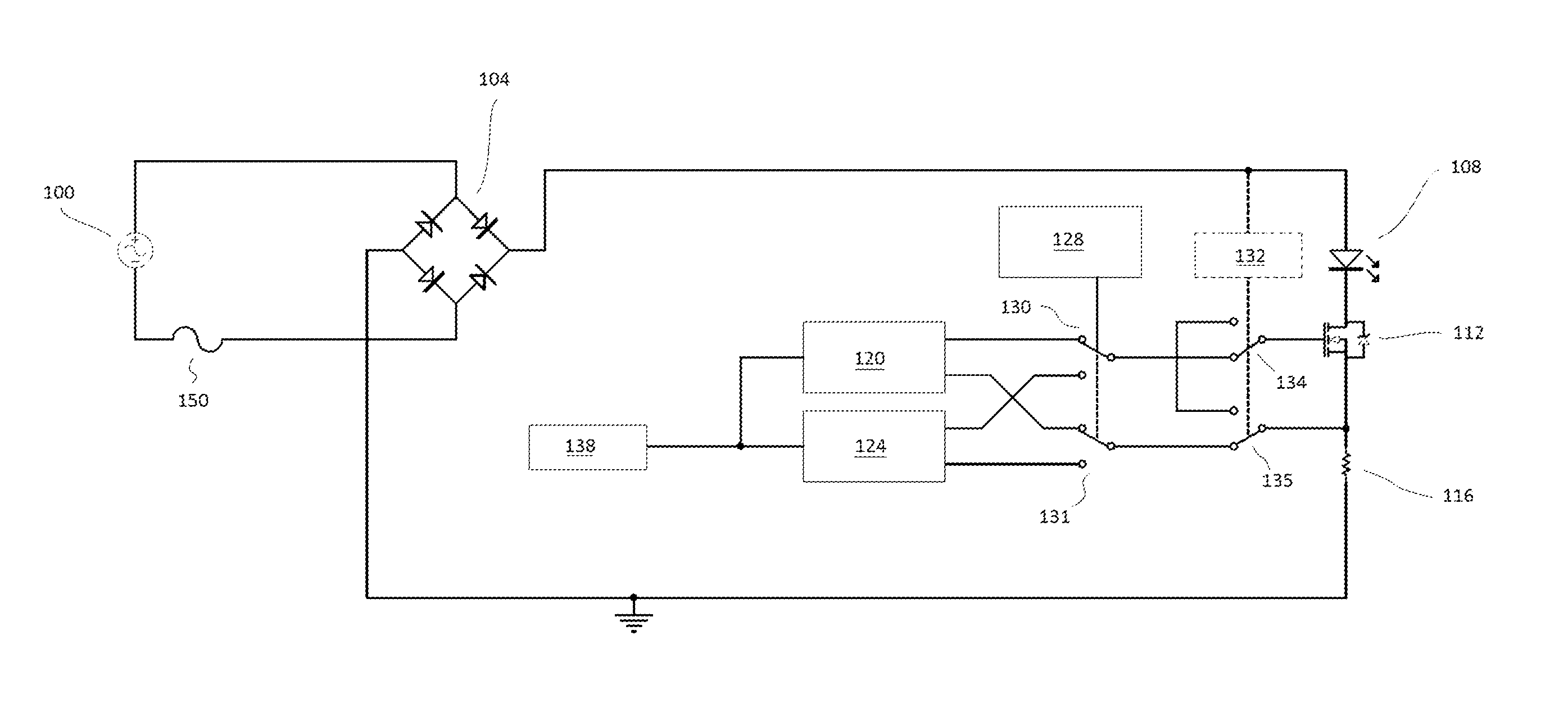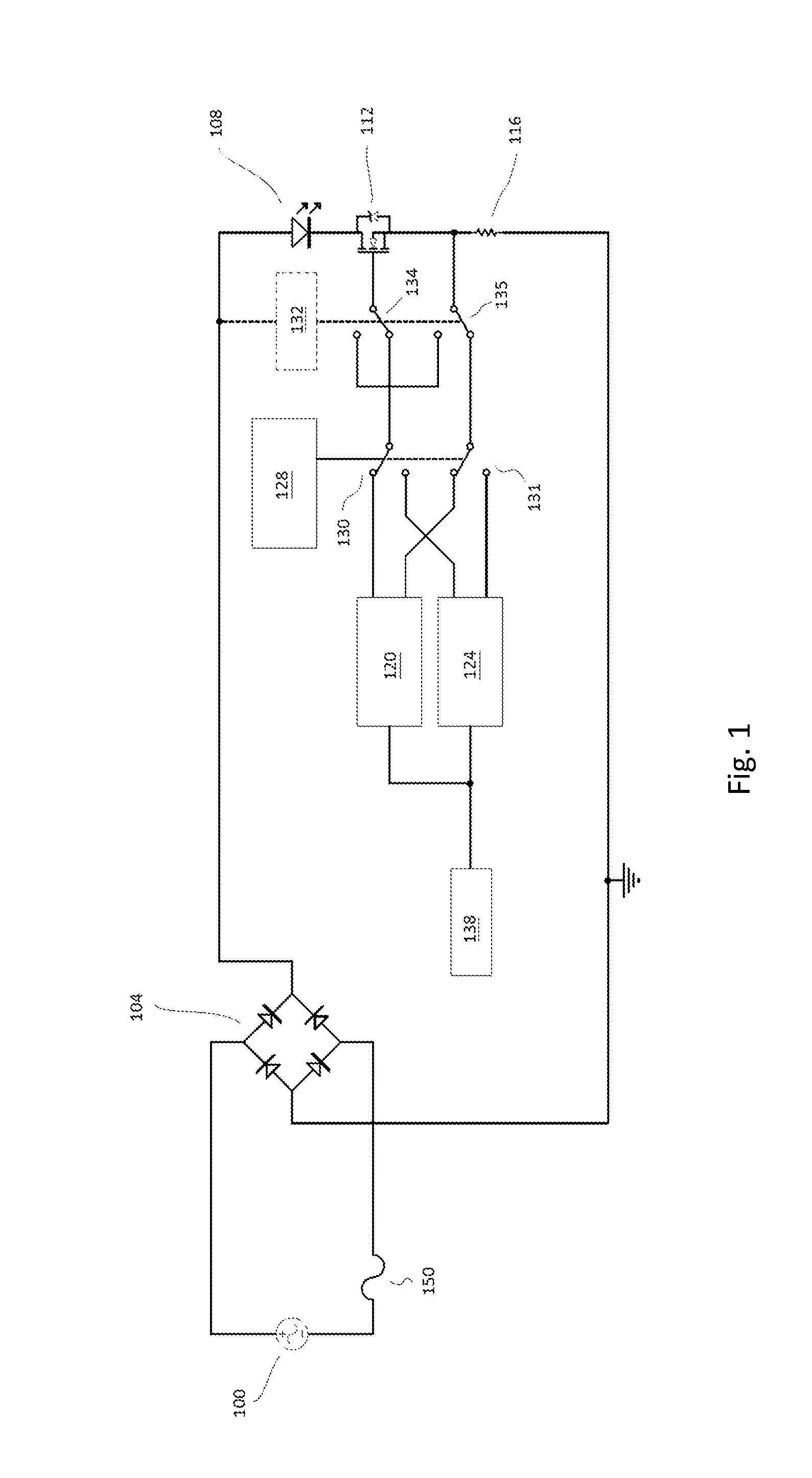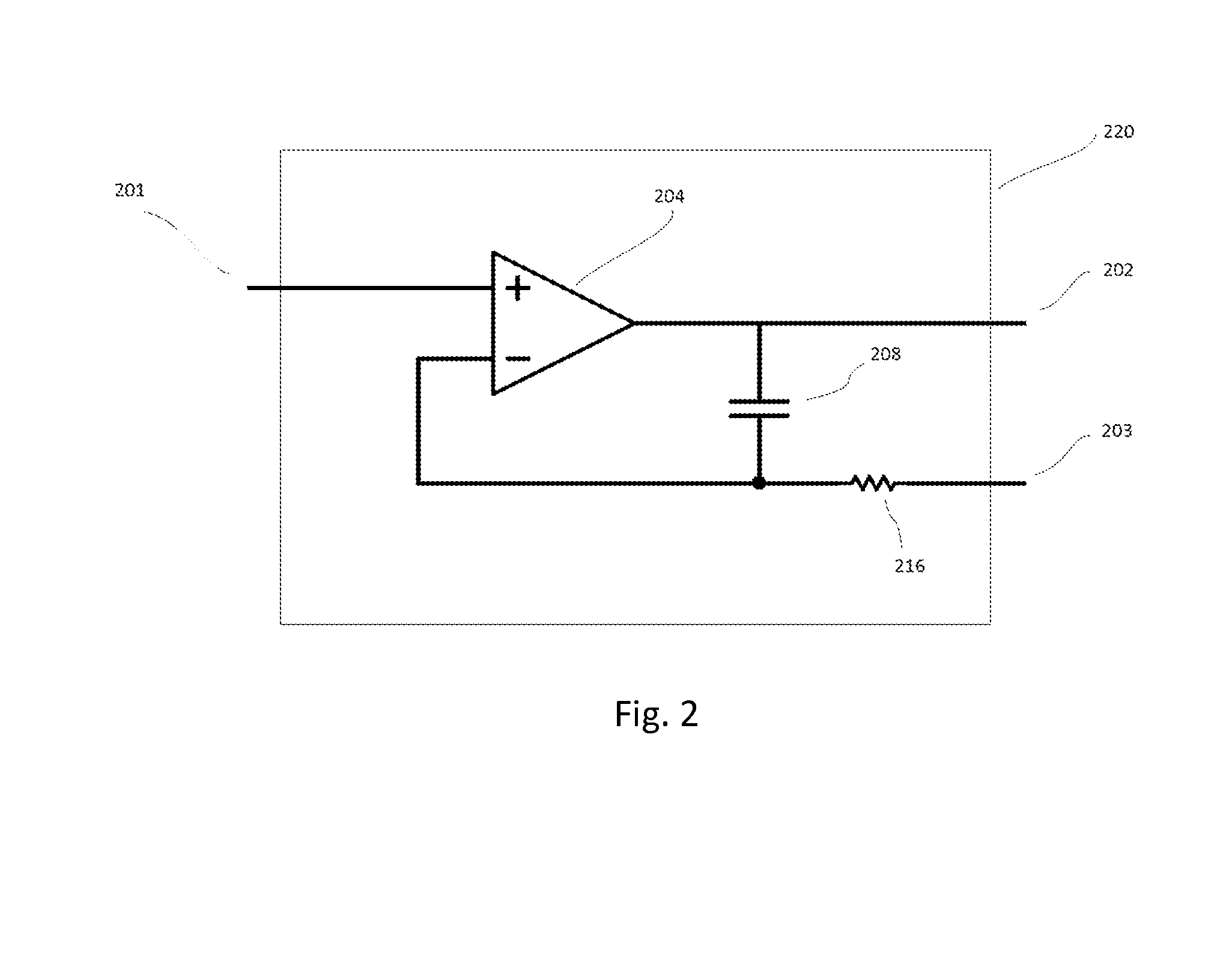Half- Or Quarter-Cycle Current Regulator For Non-Isolated, Line Voltage L.E.D. Ballast Circuits
a technology of l.e.d. or ballast circuit and current regulator, which is applied in the direction of electroluminescent light sources, semiconductor lamp usage, electroluminescent lamp sources, etc., can solve the problems of noise in the visible frequency range, circuit is subject to any noise that might be present, and detrimental to the performance of leds
- Summary
- Abstract
- Description
- Claims
- Application Information
AI Technical Summary
Benefits of technology
Problems solved by technology
Method used
Image
Examples
Embodiment Construction
[0022]Embodiments of the present invention overcome disadvantages of using a large electrolytic capacitor as discussed above by providing a current regulator configured to adapt to line voltage variations by switching between separate integrators corresponding to the different parts of the incoming line voltage wave. In various embodiments, the integrators may be switched on and off in sequence using edge and / or zero-crossing detection methods, analog switches, and a one- or two-bit counter (or timer), or by any other suitable methods known in the art. In other embodiments, the integrators may be implemented with multi-layer ceramic capacitors (MLCC) or any other capacitors known in the art. However, it should be noted that no electrolytic capacitors are required and that the teachings of the present invention may be implemented in most instances with capacitors having a voltage rating not greater than about 10 V, and in other embodiments employing capacitors with a maximum voltage ...
PUM
 Login to View More
Login to View More Abstract
Description
Claims
Application Information
 Login to View More
Login to View More - R&D
- Intellectual Property
- Life Sciences
- Materials
- Tech Scout
- Unparalleled Data Quality
- Higher Quality Content
- 60% Fewer Hallucinations
Browse by: Latest US Patents, China's latest patents, Technical Efficacy Thesaurus, Application Domain, Technology Topic, Popular Technical Reports.
© 2025 PatSnap. All rights reserved.Legal|Privacy policy|Modern Slavery Act Transparency Statement|Sitemap|About US| Contact US: help@patsnap.com



